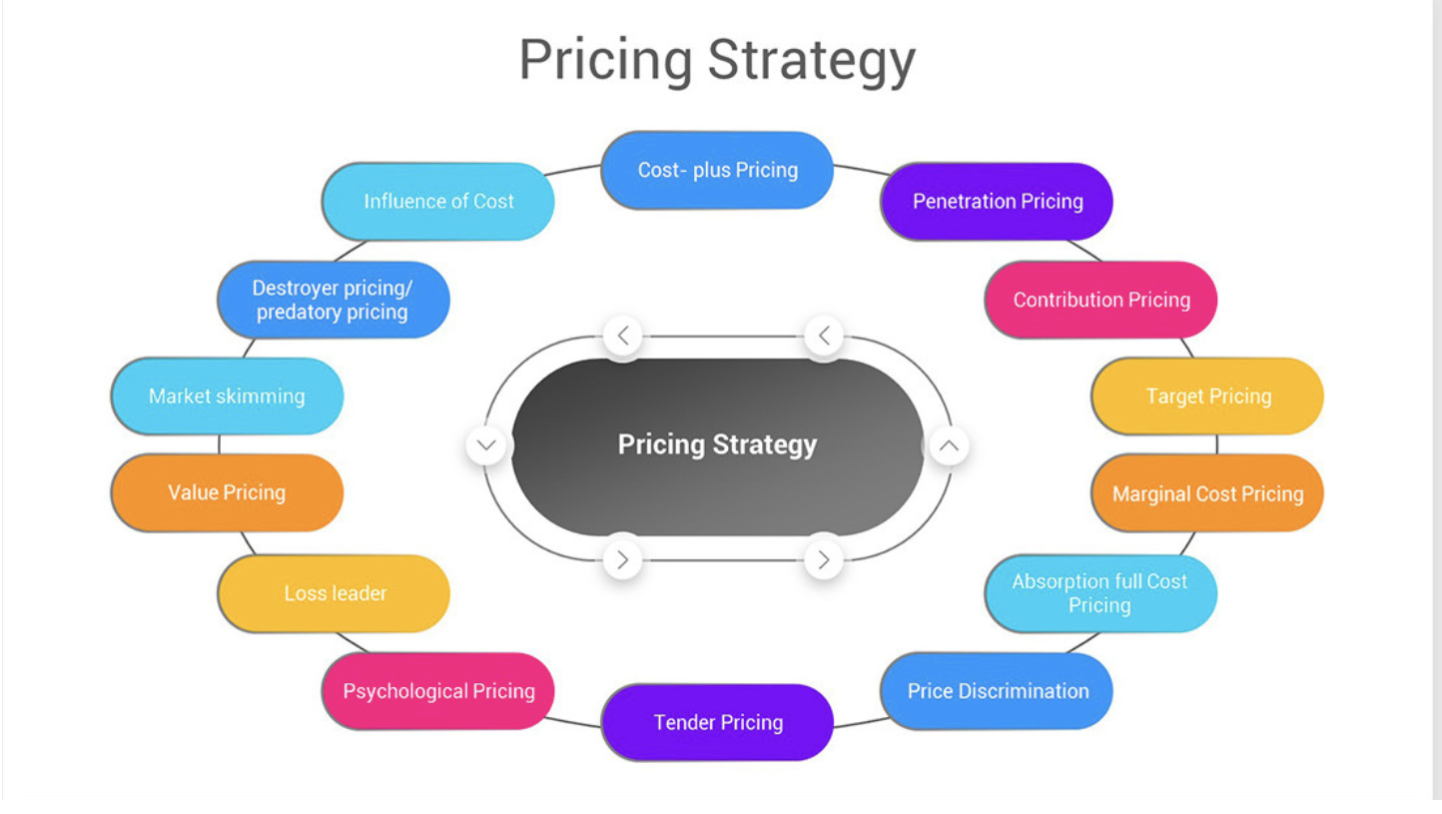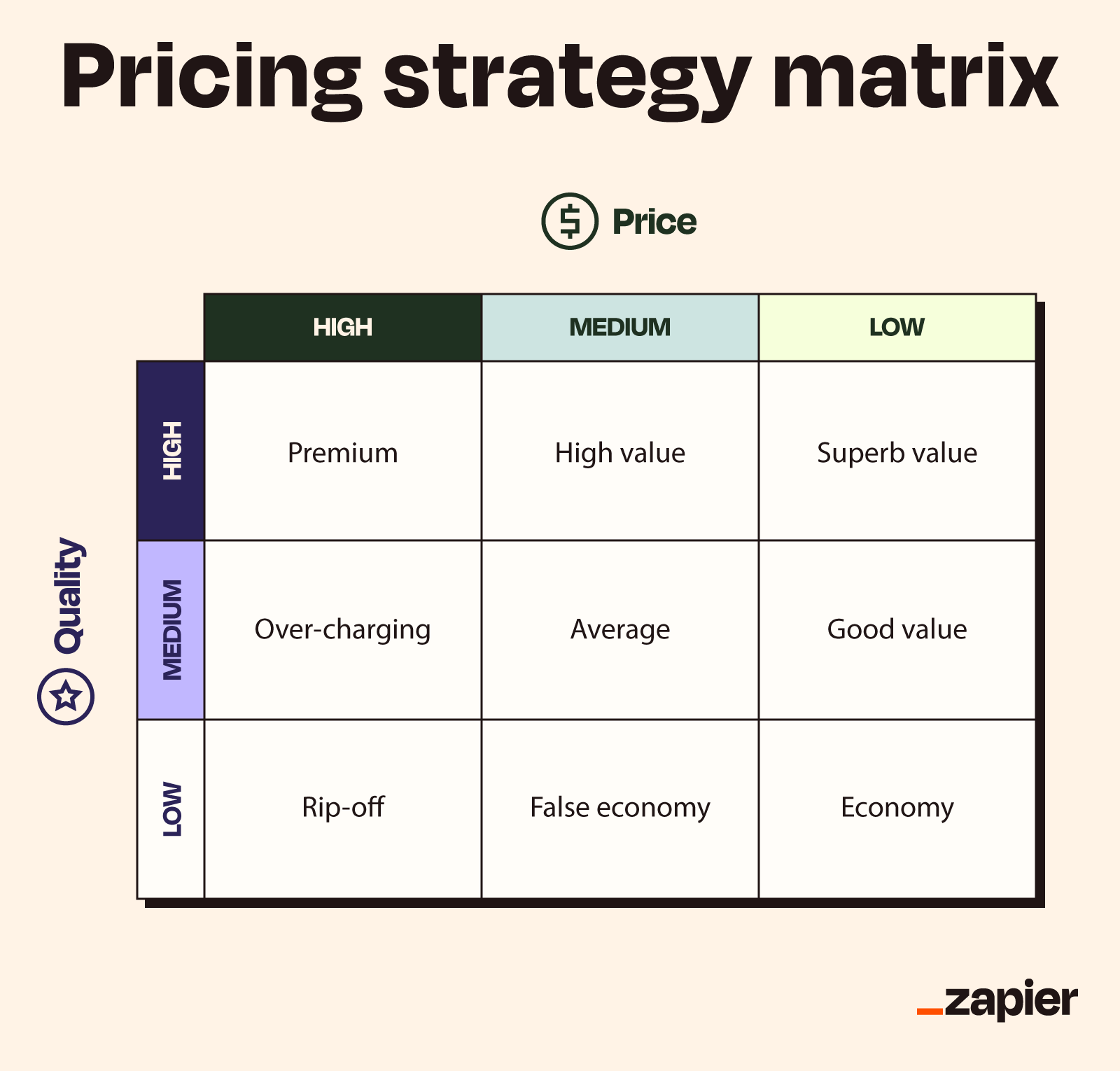How to Implement a Value-Based Pricing Strategy for Optimum Effect
How to Implement a Value-Based Pricing Strategy for Optimum Effect
Blog Article
Optimize Income With Proven Pricing Method Methods
In today's affordable marketplace, the capability to enhance income via efficient prices methods is important for sustained company success. Methods such as value-based prices, vibrant prices, and extensive market evaluation can dramatically improve a business's monetary efficiency. Comprehending consumer perception and leveraging information analytics for dexterous rates modifications are necessary elements of this technique. The details of effectively implementing these methods can pose obstacles that require mindful factor to consider. Exploring these approaches further reveals not only their prospective benefits but also important insights that might reshape your prices method.
Understanding Customer Perception
Understanding consumer assumption is critical for establishing effective prices methods. It influences just how consumers review a product's worth, high quality, and overall attractiveness. Services need to acknowledge that consumers commonly base their determination to pay not entirely on the product's intrinsic attributes yet also on emotional variables, consisting of brand online reputation, social standing, and perceived shortage.

Additionally, companies must think about the function of pricing psychology, such as beauty pricing or cost anchoring, which can considerably impact consumer habits. Comprehending these perceptions makes it possible for companies to mount their pricing methods in a manner that straightens with consumer expectations while maximizing earnings.
Incorporating client assumption right into rates approaches not just aids in establishing affordable rates yet additionally fosters brand loyalty, as customers really feel recognized and valued. Ultimately, a nuanced understanding of client perception can bring about lasting income growth and enhanced market positioning.
Analyzing Market Trends
To develop an effective prices method, analyzing market fads is essential for organizations seeking to stay competitive. Comprehending the characteristics of market changes allows companies to make informed decisions pertaining to prices adjustments, product launches, and source allotment - Pricing Strategy. By monitoring consumer actions, financial indicators, and sector advancements, services can recognize patterns that educate their prices frameworks
Key components to take into consideration when examining market patterns consist of need flexibility, seasonal changes, and arising innovations. Demand elasticity helps services determine just how price modifications might affect customer buying choices. Seasonal trends can provide insights into ideal pricing during optimal and off-peak periods, permitting calculated discounting or promotional pricing. Additionally, maintaining an eye on technological developments can aid determine possible threats or possibilities that might impact pricing techniques.
Utilizing information analytics tools can enhance the precision of fad evaluation, giving valuable understandings that assist in active decision-making. Companies should additionally consider carrying out normal marketing research to verify presumptions and adapt to evolving consumer choices. By leveraging these insights, businesses can not only maximize their pricing techniques yet additionally strengthen their general market setting, making certain lasting success and development.
Competitive Pricing Approaches
A competitive rates technique is essential for companies intending to gain an edge in a jampacked market. By analyzing competitors' rates frameworks and market positioning, business can strategically establish their rates to draw in consumers while keeping productivity. This technique needs an extensive understanding of both the competitive landscape and client understandings of worth.
One effective technique is price matching, where a business uses to match or defeat a rival's price. This technique can boost customer loyalty and motivate sales, specifically in price-sensitive markets. Furthermore, infiltration pricing can be used to capture market share by at first setting rates lower than rivals, tempting consumers to try the product and promoting brand understanding.
Furthermore, organizations can execute mental rates techniques, such as rates items just listed below a rounded number (e.g., $9.99 rather than $10 - Pricing Strategy.00) This can create the assumption of a far better bargain, affecting consumer behavior
Eventually, a successful affordable prices strategy stabilizes the need to stay eye-catching to clients while making sure that the rates model aligns with the company's total purposes. Routinely examining and readjusting rates in response to Recommended Reading market changes and rival actions is vital for continual success.
Value-Based Pricing Strategies
Value-based prices strategies focus on setting prices largely based on the perceived worth of a services or product to the client, instead of solely on production expenses or rival rates. This technique requires a deep understanding of consumer requirements, choices, and the one-of-a-kind benefits that the product and services deals. By determining the particular value chauffeurs that reverberate with consumers, companies can produce pricing techniques that show real well worth of their offerings.
To execute value-based rates efficiently, business must involve in extensive marketing research, including consumer studies and focus groups, to collect understandings into consumer assumptions. Additionally, companies should sector their customer base to tailor rates methods that line up with various worth perceptions across sections.
Communication plays an essential duty in value-based rates; companies have to verbalize the one-of-a-kind worth recommendation plainly to justify the rate point. Ongoing evaluation and change are crucial, as customer assumptions of worth might change over time due to market dynamics or competitive actions. By focusing on worth in rates approaches, companies can improve client satisfaction, improve loyalty, and ultimately optimize earnings.
Dynamic Rates Versions

Dynamic pricing leverages innovative formulas and data analytics to check competitor rates, client habits, and supply degrees. By dynamically changing prices, services can enhance profits, make best use of profit margins, and react promptly to read this post here changes in the marketplace. As an example, airline companies often utilize this model to readjust ticket learn this here now prices based on factors like continuing to be seats, time up until separation, and rival rates.
Nonetheless, the application of dynamic rates must be come close to with caution. Clear communication with clients is important to maintain trust fund and stay clear of assumptions of unfair pricing practices. Additionally, services ought to ensure that their rates formulas are not overly complex or opaque, as this can result in client dissatisfaction.
Ultimately, when executed attentively, dynamic pricing designs can provide services with a significant affordable advantage, allowing them to take advantage of on market opportunities while satisfying client expectations in a quickly altering economic landscape.
Final Thought

Techniques such as value-based rates, dynamic pricing, and detailed market evaluation can considerably improve a firm's financial performance. Seasonal patterns can give insights right into optimal pricing during height and off-peak durations, enabling for strategic discounting or promotional rates.Dynamic prices leverages sophisticated formulas and information analytics to monitor competitor rates, client actions, and stock levels. By comprehending consumer understanding, evaluating market trends, and using affordable prices methods, services can properly straighten their rates with consumer expectations. In addition, value-based pricing and dynamic rates designs make it possible for companies to react agilely to market variations.
Report this page